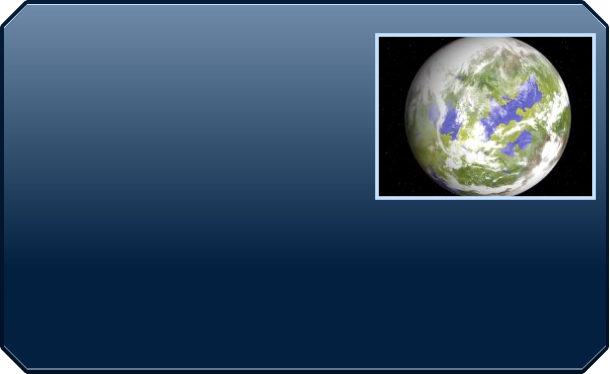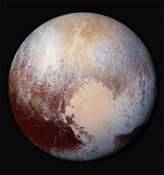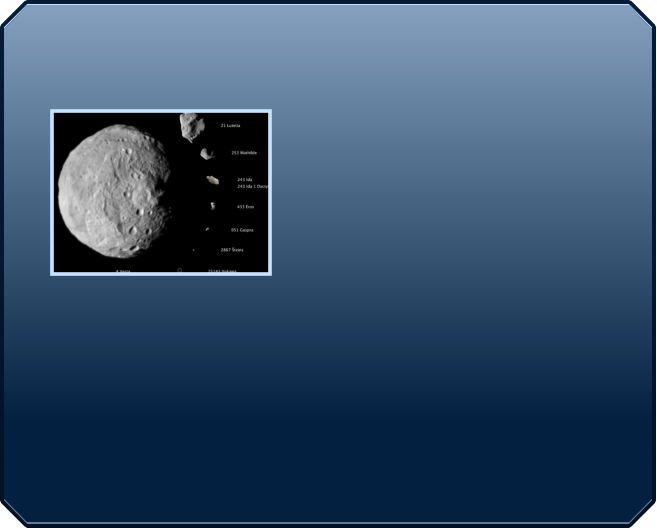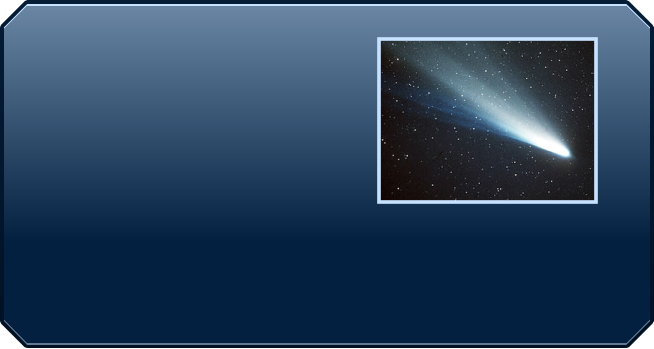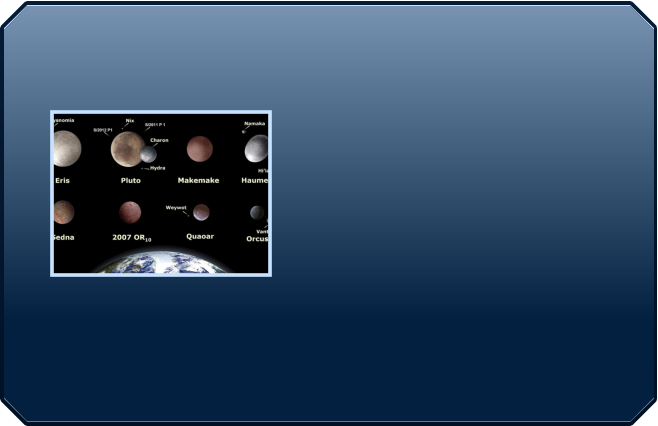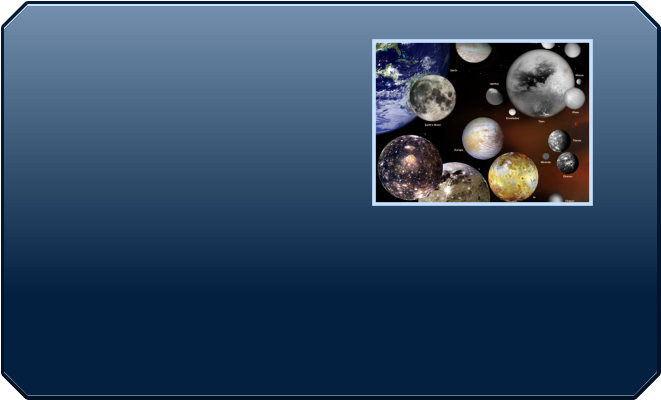You live in the solar system, which consists of that big bright thing in the center called the Sun, and thousands if not millions of various other
objects ranging from giant Jupiter all the way down to microscopic bits of dust. Our view of the solar system changed dramatically over four
hundred years ago when we realized that all of these objects circle the Sun in elliptical orbits. Here are the main types of objects:
•
Planets
How many are there? Of course there is still some debate as to the exact definition of a planet.
•
Dwarf Planets
A new catagory, added in 2006 by the IAU.
•
Asteroids (Minor Planets)
At last count, we have discovered over 700000 of these objects
•
Comets
Made primarily of ice, these are visitors from the outer solar system
•
Kuiper Objects
Pluto was the first one discovered, (now Pluto is a dwarf planet). There are hundreds more.
•
Moons
Although they do not orbit the Sun, they are still members of the solar system


Planets
Planets are large, spherical
bodies which orbit a star. Unlike
stars, they do not have
sufficiently high temperatures in
their cores to initiate
thermonuclear reactions. Astronomers speak of two
general types of planets, terrestrials, which share
characteristics with Earth, and the jovians, such as
Jupiter.
Dwarf Planets
In 2006, the International Astronomical
Union established a new definition of
planet, which resulted in the
‘demotion’ of Pluto as a planet. For
seventy-six years, Pluto was
recognized as being a planet. In the 1990’s more objects
similar to Pluto wer being discovered beyond Neptune.
This prompted the IAU to determine a new definition of
‘planet’. There are five dwarf planets officially recognized
at this point. . It is important to realize that these dwarf
planets are still planets in a real sense.
Asteroids (Minor Planets)
We now know of hundreds of
thousands of minor planets with
most of them residing between
the orbits of Mars and Jupiter.
The largest, Vesta, was
discovered with three other
minor planets in the first years of
the nineteenth century. Ceres
was the first one discovered by Piazzi in 1801. (Ceres is
now a dwarf planet, by the way) For the next hundred
years, these objects were discovered at a rate of a dozen
or so each year. With the advent of photography in the
late nineteenth century hundreds were discovered
annually. And more recently, automated telescopes are
finding new objects by the thousands each year.
Comets
Comets are icy objects that
spend most of their time far from
the Sun in the dark depths of the
Oort Cloud. Occasionally they
are bumped into highly
elongated elliptical orbits that
cause them to fall into the inner solar system, where they
grow their impressive tails and put on a grand show for a
few weeks.
Kuiper Belt Objects
The existence of these icy
objects was first suggested by
Gerard Kuiper more than fifty
years ago. Beginning in the
1990’s, dozens of these objects
were discovered in the region of
the solar system where Pluto
resides. It became evident to
many astronomers that Pluto was just one of hundreds of
similar objects, resulting in a new definition of planet by
the I.A.U. in 2006.
Moons
Moons are objects that orbit
planets. Astronomers now
count nearly 150 moons around
the planets. The big ice giant
planets have dozens of moons.
We find a great variety of natural
satellites in our solar system. Some of the larger moons
were almost certainly formed at the same time as their
parent planet. Others are obviously captured objects with
wildly eccentric orbits. Still others orbit near the planet
and have the job of keeping planetary rings in line.



